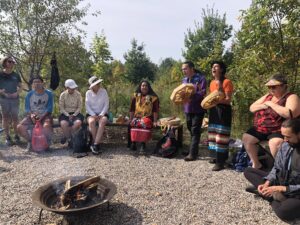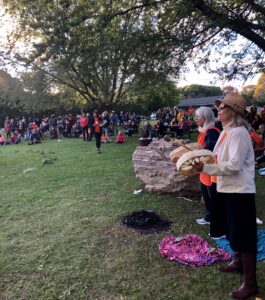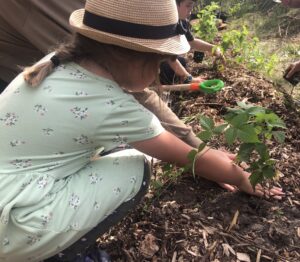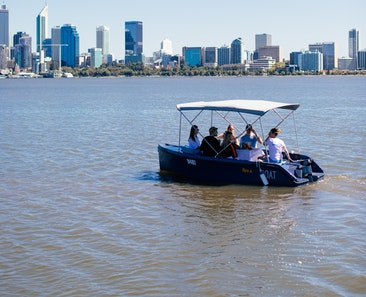The National Healing Forests Initiative was started by Patricia Stirbys, a Saulteaux Cree from Cowessess First Nation, and Peter Croal, a retired geologist. It shows how working together can bring about healing and positive change.
The Start of the National Healing Forests Initiative
This idea began during the Truth and Reconciliation Healing Walk in Ottawa in 2015. Patricia and Peter, from different backgrounds, but sharing a common goal, started dreaming of creating Healing Forests across Canada. They wanted these forests to be places where survivors and families of the Residential School system, as well as all Canadians, could heal, think and talk about reconciliation.
The Residential School system is a dark chapter of Canadian history where Indigenous children were taken from their families and communities. These children faced harsh conditions and forced cultural assimilation, and many never returned home. The Truth and Reconciliation Commission (TRC) of Canada has made 94 Calls to Action to deal with this legacy and promote reconciliation. The National Healing Forests Initiative directly responds to several of these calls, including those about education, commemoration and recognizing missing children.
The Importance and Purpose of Healing Forests
Healing Forests are more than just green spaces; they are living memorials that honor the children who never returned home and provide a sanctuary for survivors and their families. These forests are designed to be places of reflection, learning and community building, where the past can be acknowledged, and the future can be nurtured.
A unique aspect of the Healing Forests is the collaboration between Indigenous and non-Indigenous communities. The initiative requires that the non-Indigenous community reach out and form a partnership with the respective Indigenous community. This collaboration ensures that each Healing Forest reflects the culture, history and traditions of the Indigenous Peoples where it is situated.
Responding to the TRC Calls to Action
The National Healing Forests Initiative addresses multiple Calls to Action from the TRC report:
Call 12: Culturally Appropriate Early Childhood Education
Healing Forests can serve as outdoor classrooms where children learn about Indigenous cultures and traditions in a respectful and immersive environment.
Calls 58 and 59: Churches and Reconciliation
Many Healing Forests are located on church properties, fostering dialogue and reconciliation between religious institutions and Indigenous communities.
Calls 62 and 63: Education and Reconciliation
Healing Forests provide educational opportunities for all Canadians to learn about the history and legacy of the Residential School system.
Calls 74 and 75: Missing Children and Burial Information
These forests offer a space to honor and remember the children who never returned home, acknowledging their lives and the loss felt by their families.
Calls 79, 80, 81, and 82: Commemoration
Healing Forests serve as living memorials, offering a place for ceremonies and commemorative events.
Call 93: Newcomers to Canada
These spaces help newcomers understand the history of Indigenous Peoples in Canada and foster respect for Indigenous laws, traditions and culture.
Growing a Movement: The Spread of Healing Forests
Since it started, the National Healing Forests Initiative has has flourished and reached many communities. There are now 27 Healing Forests across Canada, with communities working on another 30. This shows how much people want reconciliation and how nature can help with healing.
The initiative has support from organizations like the David Suzuki Foundation and the Royal Canadian Geographic Society. The latter has even developed a teaching module about reconciliation using the Healing Forest concept, making it a part of education.
Steps to Creating a Healing Forest
Creating a Healing Forest is a community-driven process that involves several steps:
- Form a Group: Assemble a small group of like-minded, caring individuals or students who are passionate about reconciliation and healing.
- Identify a Partner Community: Engage with a community within the traditional territory where the Healing Forest is to be situated. This community will be active partners and visionaries in the project.
- Develop a Vision: Collaborate to create a vision for the Healing Forest. This vision should reflect the cultural and historical context of the area.
- Find a Location: Identify a location that aligns with your vision. This could be public land, a school, a church, a park, or private land.
- Engage Landowners: If the chosen location is on municipal or private land, seek permission and support from the landowners or town council.
- Raise Funds: Fundraising may be necessary for elements such as plaques, benches, tree planting, and other features. Support can come from town councils, schools, churches, and other community organizations.
- Community Involvement: Include the surrounding community in the initiative and invite them to participate in the development and maintenance of the Healing Forest.
- Dedicate the Space: Hold a ceremony to dedicate the Healing Forest, marking it as a space for healing and reconciliation.
The Impact of Healing Forests
Eugene Arcand, a member of the Indian Residential School Survivor Committee, has emphasized the importance of the Healing Forest project, noting its potential to aid in healing and reconciliation for survivors and their families. Stephen Augustine, a Mi’Kmaw Hereditary Chief and Associate Vice-President at Cape Breton University, echoed this sentiment, describing the initiative as “reconciliation in action.”
Former Justice Murray Sinclair, who officiated the initial planning meeting of the Healing Forest in Winnipeg, has highlighted that reconciliation is not solely an Indigenous issue, but a Canadian one. The Healing Forests Initiative embodies this principle, bringing together diverse communities in a shared journey towards understanding and healing.
A Path Forward
The National Healing Forests Initiative is a beacon of hope and a model for reconciliation. By creating spaces that honour the past and nurture the future, this initiative fosters a deeper understanding of the Residential School system and its lasting impact on Indigenous communities. It also provides a tangible way for Canadians to engage in the process of reconciliation, bridging cultural divides and building a more inclusive and compassionate society.
The initiative’s ongoing success depends on the involvement of communities, organizations and individuals across Canada. Every new Healing Forest is a step forward in acknowledging the past, addressing the present, and creating a shared future built on mutual respect and understanding. Each forest represents a commitment to not only remember the children who never returned home, but also to support survivors and their families as they continue their journey of healing.
For Indigenous communities, these spaces provide a much-needed acknowledgment of their experiences and a platform to share their histories and traditions. For non-Indigenous Canadians, Healing Forests serve as an opportunity to learn, reflect and take actionable steps towards reconciliation. Together, these efforts contribute to a national movement of healing and hope.
As more communities embrace the vision of Healing Forests, the initiative continues to grow in both impact and scope. These forests stand as living symbols of reconciliation—places where nature and humanity intersect to foster understanding, compassion and healing. They remind us that reconciliation is not a one-time act, but an ongoing journey that requires effort, empathy and collaboration from all Canadians.
If you are inspired by the National Healing Forests Initiative, consider taking the first step in your community. Whether through forming partnerships, supporting existing Healing Forests, or creating new ones, every action helps plant the seeds of reconciliation and healing for generations to come.
For more information on how to get involved, reach out to the National Healing Forests Initiative at Healingforestscanada@gmail.com. Together, we can nurture these spaces of healing and contribute to a brighter, more inclusive future for all.
Join us in support of Indigenous Conservation efforts and leadership so that we can share your voice and values where they’re most needed:







